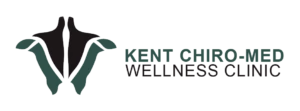Dr. Maryam and Dr. Raphael attended an interactive course on the weekend of 11-12 November. They had an opportunity to learn how to refine their diagnostic skills. Therefore, this allows them to better detect many diseases and trauma of the neck and thoracic spine. These are the key points and skills they learned:
- Important findings found on emergency X-Rays done at the hospital can be missed. Chiropractors should not rely on written reports from radiologists, but must conduct a second opinion of the imaging or order their own films.
- Better screening skills for fractures of the neck and thoracic spine that are extremely difficult to visualize on an X-Ray film
- History of heavy smoking, neck pain with arm pain, and swelling of the face and arm can be symptoms of a lung tumor. Detection of this tumor on X-Ray is very difficult. A review of screening strategies on film was explained to the practitioners.
- Jaw pain that does not resolve with dental, physiotherapy or massage could be triggered from neck musculature, nerve damage in the brain or joints pain in the neck. Chiropractic adjustments can eliminate the jaw pain permanently.
- In rare cases, vertebral arteries can be damaged during a car accident and become tortuous within the spine. Sometimes, over the years, they can erode the bone due to pulsation effect. These findings are very challenging to detect on X-Ray films, but can save a patient’s life. Chiropractic adjustments are contraindicated in these cases as a result of the blood circulation’s turbulence within the twisted segment of the artery.
- It is important to properly detect multiple myeloma, a relatively common tumor of the blood, on an X-Ray. This is crucial to save a patient’s life. Symptoms of this tumor are not obvious, especially if they overlap with a history of trauma.
- Review of the guideline to detect ankylosing spondylitis disease
- Intensive review of the anatomy of the brain, spine, spinal cord, jaw, and brain
- Distinguishing the different types of hematomas of the brain especially after a car accident and knowing how to manage them appropriately.
- Better detection of compression fractures in young population using X-Ray film
In conclusion, Dr. Maryam and Dr. Raphael are pleased to inform their patients that they have acquired great knowledge and clinical confidence after attending this course. They are now more aware of how to detect life threatening injuries. Consider booking an appointment with us for better peace of mind!
